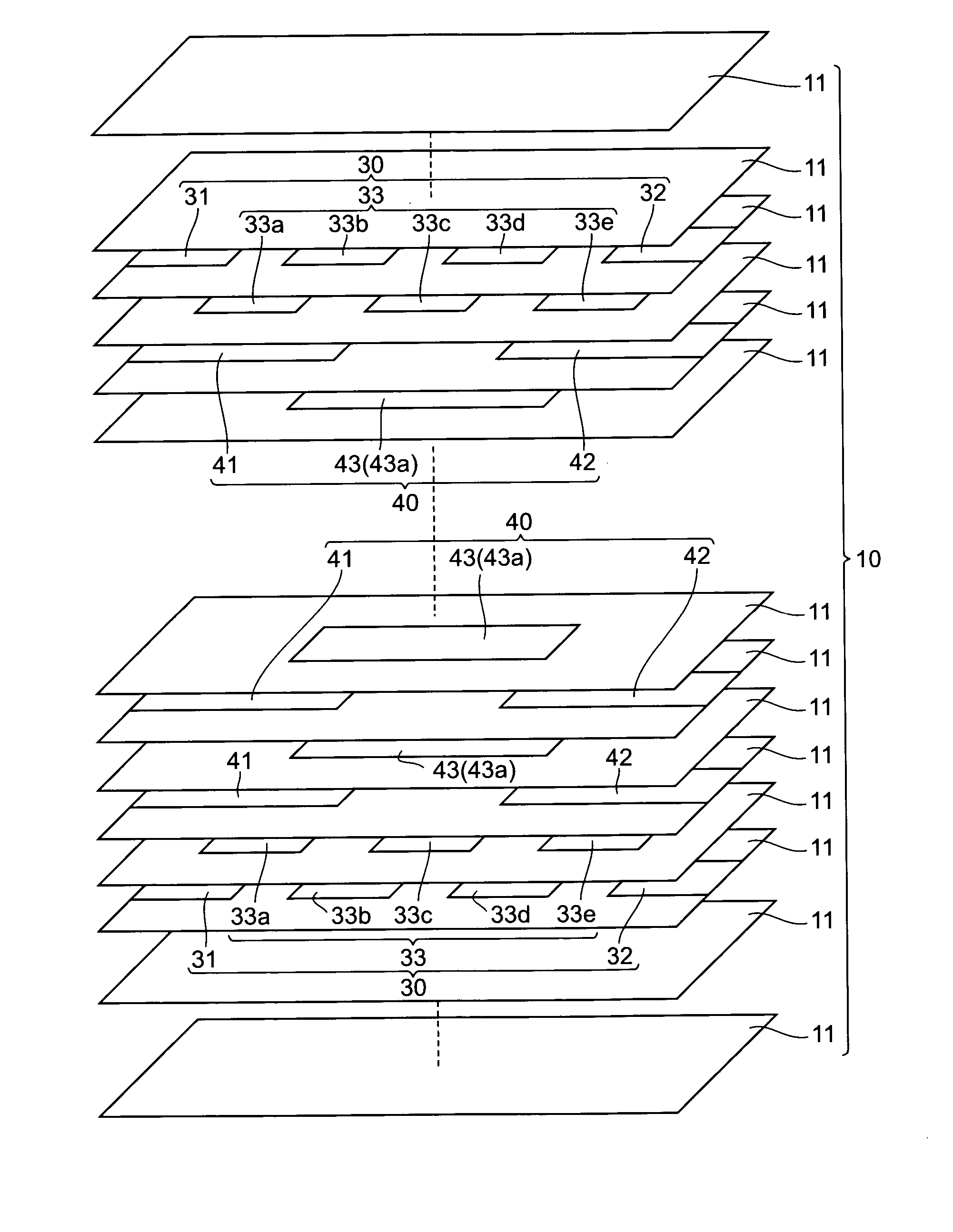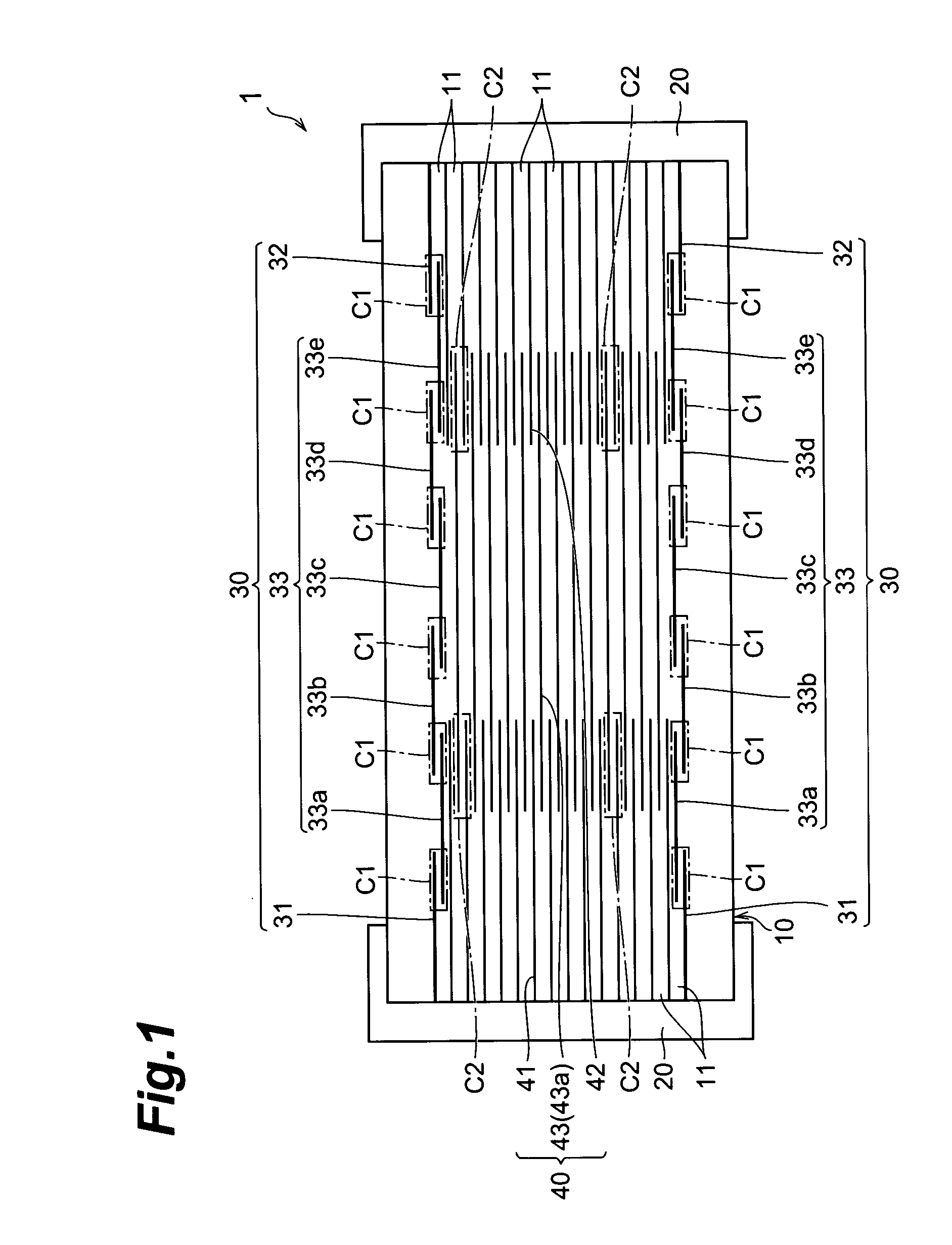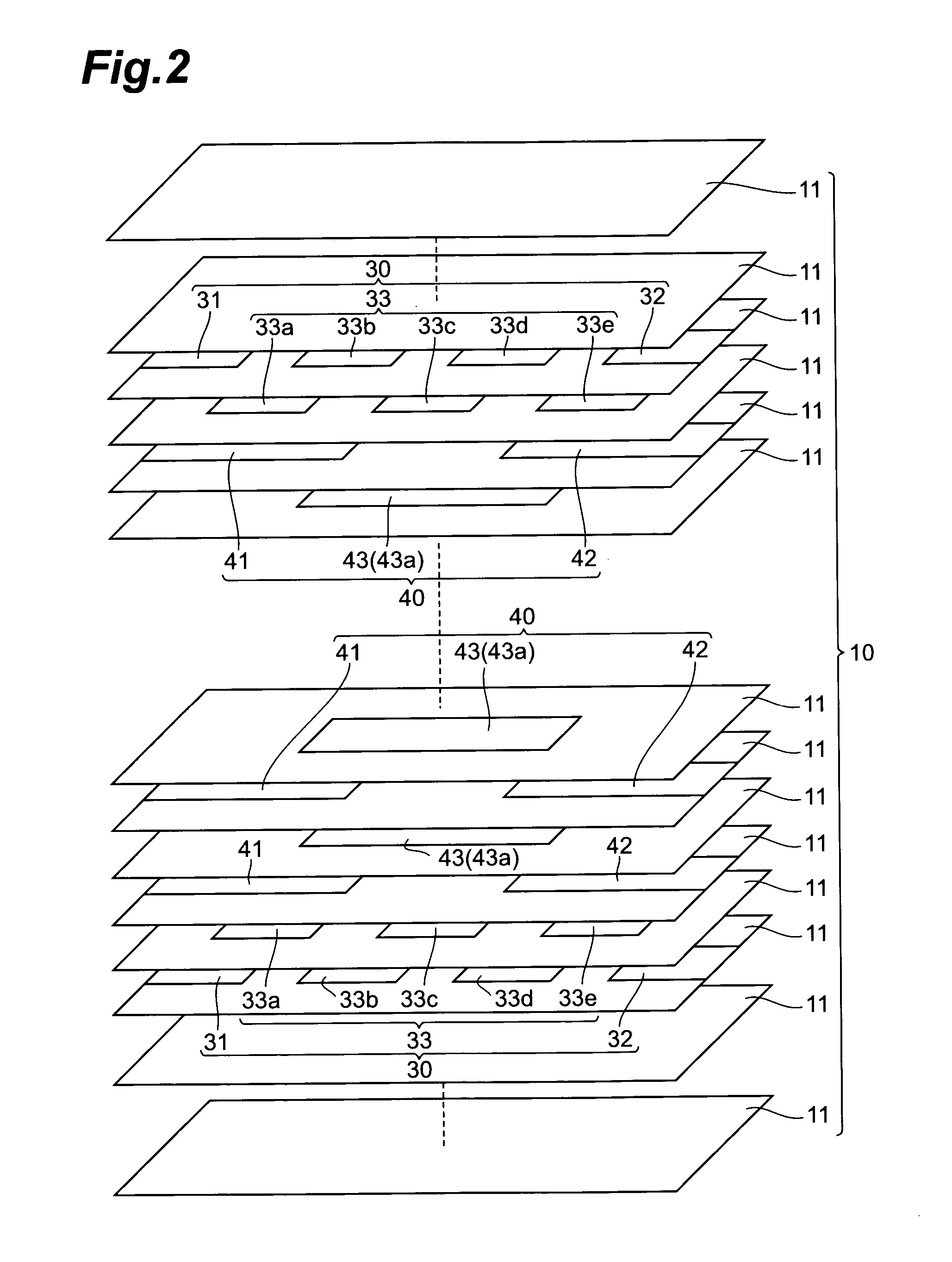Multilayer ceramic condenser
a ceramic condenser and multi-layer technology, applied in the direction of multiple fixed capacitors, fixed capacitor details, capacitors, etc., can solve the problems of difficult to achieve a smaller size/lower profile and a larger capacity of multi-layer ceramic condensers, and achieve a smaller size/lower profile and a lower profile. , the effect of enhancing
- Summary
- Abstract
- Description
- Claims
- Application Information
AI Technical Summary
Benefits of technology
Problems solved by technology
Method used
Image
Examples
Embodiment Construction
[0025] In the following, preferred embodiments of the present invention will be explained in detail with reference to the accompanying drawings. In the explanation, constituents identical to each other or those having the same functions will be referred to with numerals identical to each other without repeating their overlapping descriptions.
[0026] First, the configuration of a multilayer ceramic condenser 1 in accordance with an embodiment will be explained with reference to FIGS. 1 and 2. FIG. 1 is a view illustrating a cross-sectional configuration of the multilayer ceramic condenser in accordance with this embodiment. FIG. 2 is an exploded perspective view for explaining the configuration of the multilayer ceramic condenser in accordance with this embodiment. FIG. 2 does not show terminal electrodes 20 which will be explained later.
[0027] The multilayer ceramic condenser 1 comprises a multilayer body 10; a first terminal electrode 20a, a second terminal electrode 20b; first in...
PUM
| Property | Measurement | Unit |
|---|---|---|
| surface flashover voltage | aaaaa | aaaaa |
| surface flashover voltage | aaaaa | aaaaa |
| voltage | aaaaa | aaaaa |
Abstract
Description
Claims
Application Information
 Login to View More
Login to View More - R&D
- Intellectual Property
- Life Sciences
- Materials
- Tech Scout
- Unparalleled Data Quality
- Higher Quality Content
- 60% Fewer Hallucinations
Browse by: Latest US Patents, China's latest patents, Technical Efficacy Thesaurus, Application Domain, Technology Topic, Popular Technical Reports.
© 2025 PatSnap. All rights reserved.Legal|Privacy policy|Modern Slavery Act Transparency Statement|Sitemap|About US| Contact US: help@patsnap.com



